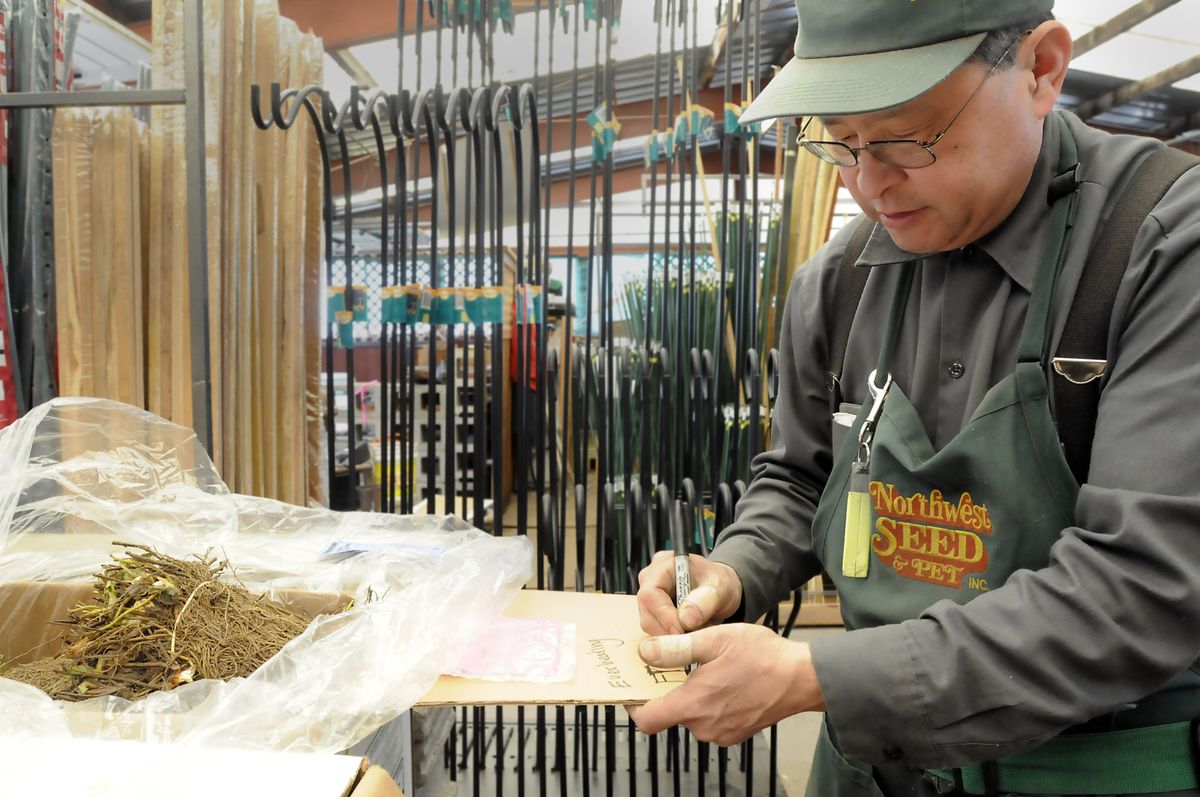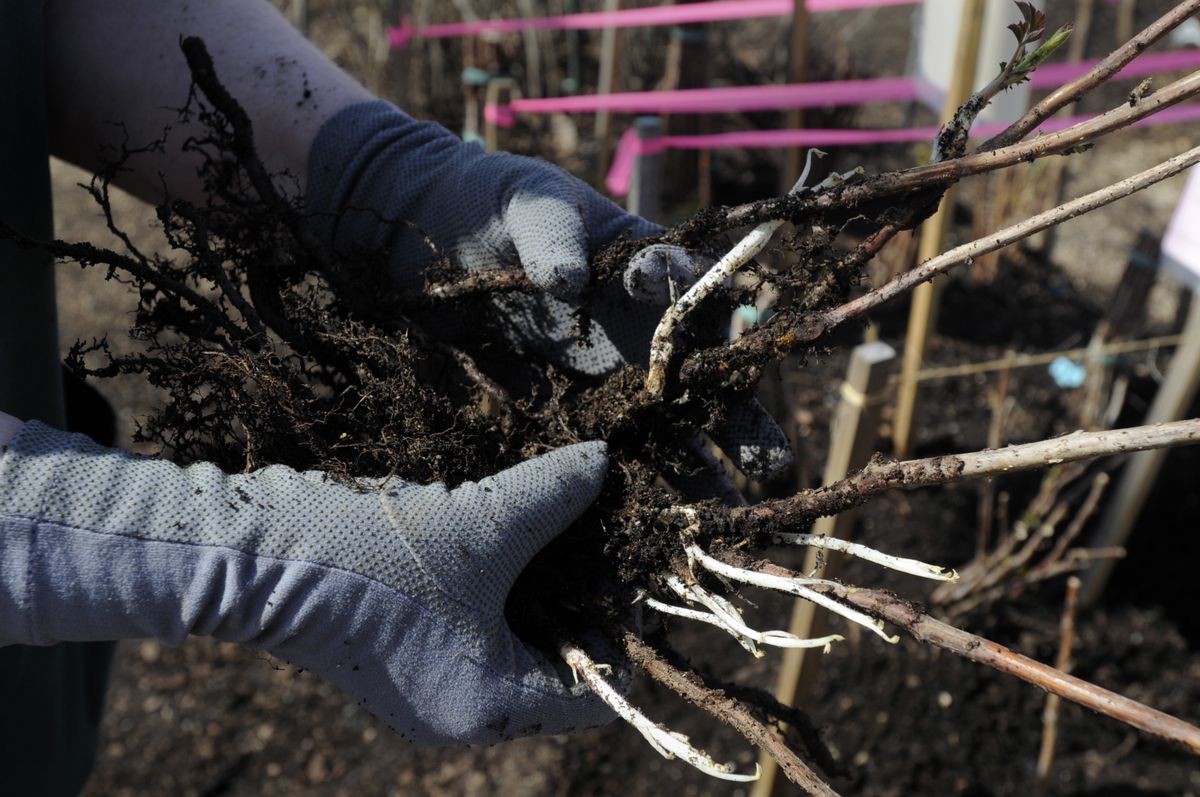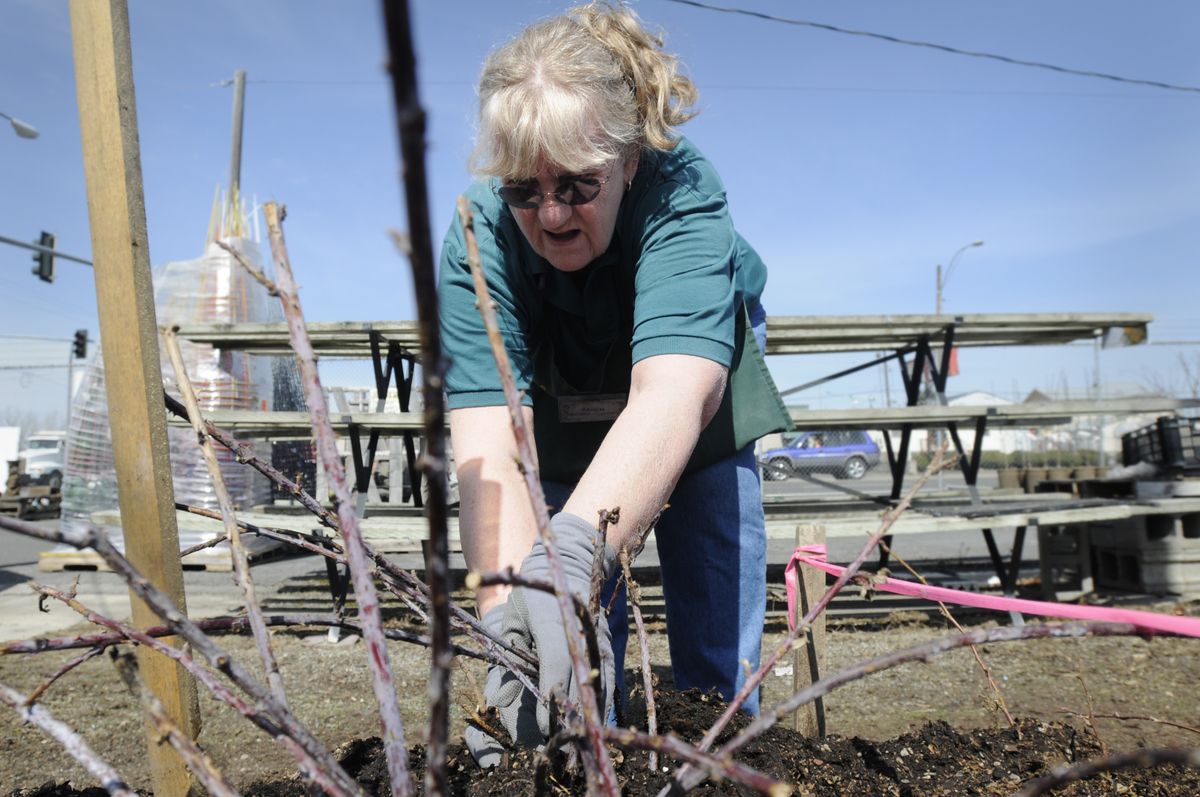Site selection, preparation keys to berry harvests
Karen Marcus pulls up bare root raspberry canes for a customer at Northwest Seed and Pet on Wednesday. Gardeners are already buying their berry plants – strawberry, raspberry, blueberry, currants and gooseberries – to plant this year. (Photos by Jesse Tinsley / The Spokesman-Review)
One of the most delightful aspects of summer is eating fresh berries. If that thought just made your mouth water, why not consider growing your own?
Strawberries, raspberries and blueberries are surprisingly easy to grow. By following these basics on how to cultivate them in your own garden, you will be rewarded with abundant harvests of these tasty little gems.
Because berry plants will produce for many years, site selection and preparation are important. Choose a sunny site where the soil is well-drained, because the plants will suffer from root rot if grown in water-logged soil. If your soil has poor drainage, consider growing berries in raised beds that are 10 to 12 inches high.
Prepare the soil in the planting bed by spading to a depth of about one foot and adding organic matter like compost, decomposing leaves or peat moss. Most berry plants prefer a slightly acidic soil with a pH of 5.0 to 6.5. This can be achieved by adding sulfur or ammonium sulfate (21-0-0) to the planting area.
Another important consideration is choosing a watering method. All berry plants prefer to be watered at the soil surface. Overhead watering causes the fruit to rot and makes the foliage more susceptible to disease.
A simple solution is to use soaker hoses or a drip irrigation system. The best time of day to water is early morning.
Strawberries are easy to grow and are available in three types: June-bearing, everbearing and day-neutral.
As the name implies, June-bearers provide a single crop from June into July and are considered the most productive. Everbearers produce fruit twice during the growing season, usually in June and August.
Day-neutrals produce fruit throughout the season, but they don’t tolerate the intense heat of our summers very well.
The best way to start strawberries is to buy bare-root plants at a local garden center in early spring.
The plants should be spaced one foot apart. When planting them, it’s important to spread out the roots and make sure the plant’s crown – the area where the leaves emerge – is at the soil surface. Press the soil firmly to avoid having air pockets around the roots.
Raspberries are also available in bare-root form in the early spring. They should be spaced two feet apart to get the best yields.
Perennial plants, raspberries are available in red, black, purple and yellow cultivars. The red and yellow cultivars grow best in this region.
The tricky part about growing raspberries concerns when the canes will bear fruit and when to prune them.
Each cane lives for two years. The first-year cane, known as a primocane, devotes its energy to growing leaves. The second-year cane, known as a floricane, will bloom and bear fruit.
Summer-bearing cultivars fruit on the previous year’s growth. Fall-bearers fruit twice each season: in early summer on the previous year’s canes, and again in the fall on the current season’s canes.
The canes of summer-bearers that have already fruited should be cut back to the ground in the fall or late winter. The canes of fall-bearers should not be cut back to the ground until they’ve had a chance to bear twice.
Many gardeners growing fall-bearers avoid the confusion by waiting until the spring before pruning the canes. If the canes sprout new growth, they leave the canes alone. If they don’t have any new sprouts, they cut the canes back to the ground.
Blueberry bushes make wonderful additions to the landscape because they have fragrant, bell-shaped flowers in the spring, prolific berries in July and August, and bright red foliage in the fall.
These 3-foot-tall bushes thrive in acidic soil that has a pH of 4.5 to 5.5 so be sure to add peat moss, sulfur or ammonium sulfate to the planting bed annually. Space plants about 4 feet apart and add mulch every year.
To avoid damaging their shallow roots, cultivation in the bed should be kept to a minimum. Once the plants are well-established, begin an annual pruning program to remove some of the oldest branches. This should leave each plant with a mixture of 1-, 2- and 3-year-old branches for a total of six to eight branches.
Currants and gooseberries are also suitable for growing in home gardens. These small bushes average 3 to 4 feet in height and are very prolific.
Different currant cultivars produce berries in a variety of colors, but most gardeners are familiar with red currants.
Space plants 6 feet apart and prune them to maintain an open shape. Since picking individual berries is tedious, harvest fruit clusters instead.
Currants are used for making jellies and juices. Different gooseberry cultivars produce green, gold, red or black berries that are used to make jellies and wine.
Watch out for the small thorns on the branches. Since currants and gooseberries have shallow roots, mulch them heavily to suppress weeds rather than disturbing the bed with cultivation.


